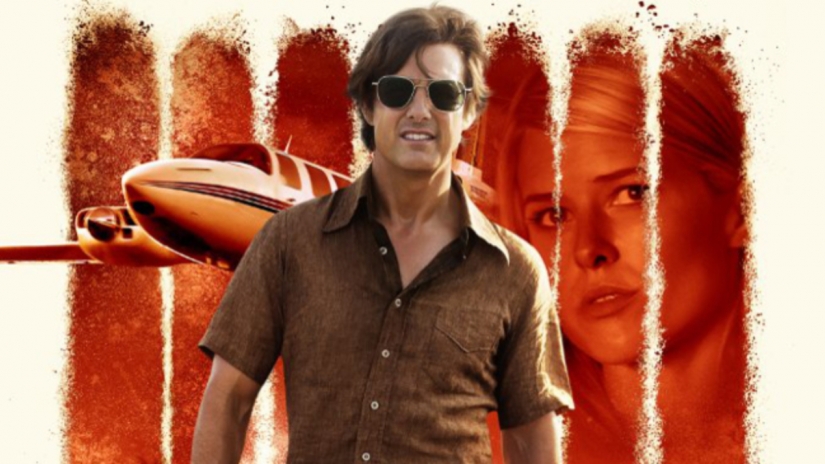Director Dough Liman’s American Made is a good example of greed and the epic culture of corruption in the US. Based on a true story, it reveals the thrilling life of an opportunist.
Narrated in a non-linear manner with archived video footage, the plot unveils how during the height of the Cold War, in the mid-1970s, Barry Seal (Tom Cruise) the youngest pilot for the commercial airline TWA got into a crazy mess.
Barry explains how he was enticed by Monty Schafer, a CIA agent, to fly clandestine reconnaissance missions over South America using a small plane with cameras installed to snap photos of warring insurgents on behalf of the US government.
But, what starts with taking photos of insurgent groups in the jungles of Central America quickly morphs into a courier service between the CIA and General Noriega in Panama. And this soon leads to him using his CIA-provided twin-engine plane to transport drugs into Louisiana from Colombia. The Medellin Cartel kingpins Jorge Ochoa (Alejandro Edda), Carlos Ledher (Fredy Yate Escobar) and Pablo Escobar (Mauricio Mejia) make him an offer he cannot refuse.
Being a CIA mission aircraft, the CIA turns a blind eye to the drug smuggling, but the DEA (Drug Enforcement Administration) tracks him down. Schafer warns Seal of the consequences and protects him from the DEA by moving him to a remote town in Arkansas called Mena and in reciprocation, forces him to transport guns to the Contras.
Realising that the Contras are not serious about the guns, Barry starts delivering the guns to the Cartel. Apart from this, on the behest of the CIA, he transports the Contras to the US and sets up a military training base for them near his home town. The militants, however, escape from the training programme, making the CIA shut the programme down.
In the meanwhile, Barry surfaces on the radar of the FBI, DEA and other law enforcement agencies and with the CIA abandoning him, how he dodges the agencies and brokers a deal with the White House, which eventually leads to crossing and double crossing forms the crux of this tale.
While the actual story of Barry Seal is exciting, the facts and figures in the narrative don’t make an impact. But it definitely hits the right spot for a fact-based, journalism inspiring story about flamboyant figures who were a part of an even bigger, crazier story of the Cold War era.
Visually, the film is rustic and simple. The period is captured by the agitated style and fusing palette of the Uruguayan cinematographer Cesar Charlone. His frames are banal and yet arresting.
Director Liman does his best to keep this top-heavy narrative in constant motion without approaching the technical or structural inventiveness of his previous films. The storytelling is both so distracted and distracting that there is barely time to consider what it all adds up to.
The editing by Andrew Mondshein is somewhat haphazard. Some scenes do end abruptly.
Recommended
On the performance front, Tom Cruise is every inch Barry Seal. He punches his emotions with apt precision, be it the thrills, the insanity and “patriotic duty” he delivers it all with a straight face with barely a trace of irony or repentance.
Sarah Wright as his wife Lucy Seal has nothing much to offer except for initially screaming, “Daddy’s lost his mind,” in her effort to comfort their small children on the night of the hasty “we’ve got to leave town” moment.
All supporting characters playing the contras and the drug lords along with Caleb Landry Jones as Seal’s idiotic brother-in-law and Jesse Plemons as the local Sheriff add colour and flavour to the narrative.
Overall, while the details are dazzling, the final effects of the film are mildly thrilling but yet far from tame.



